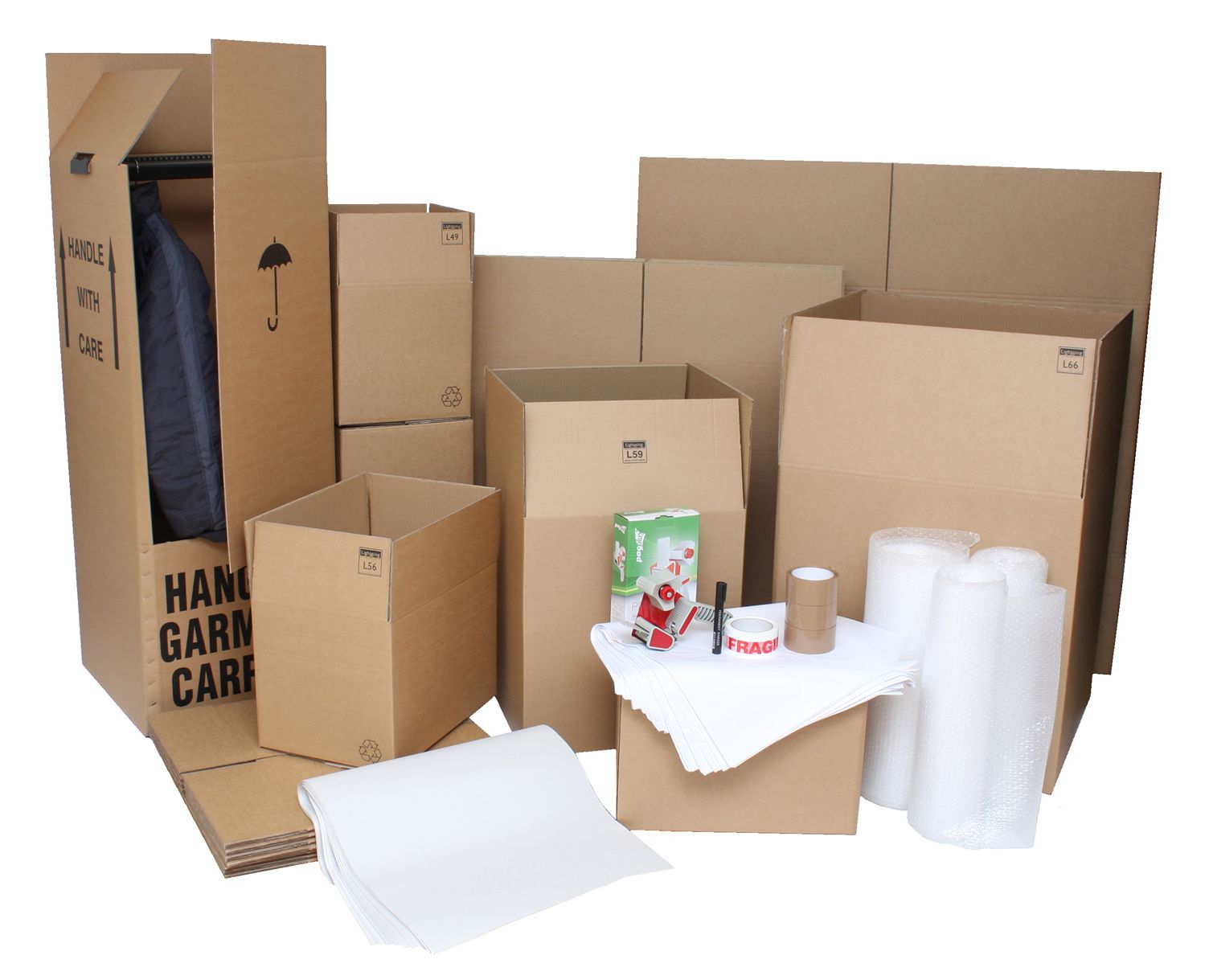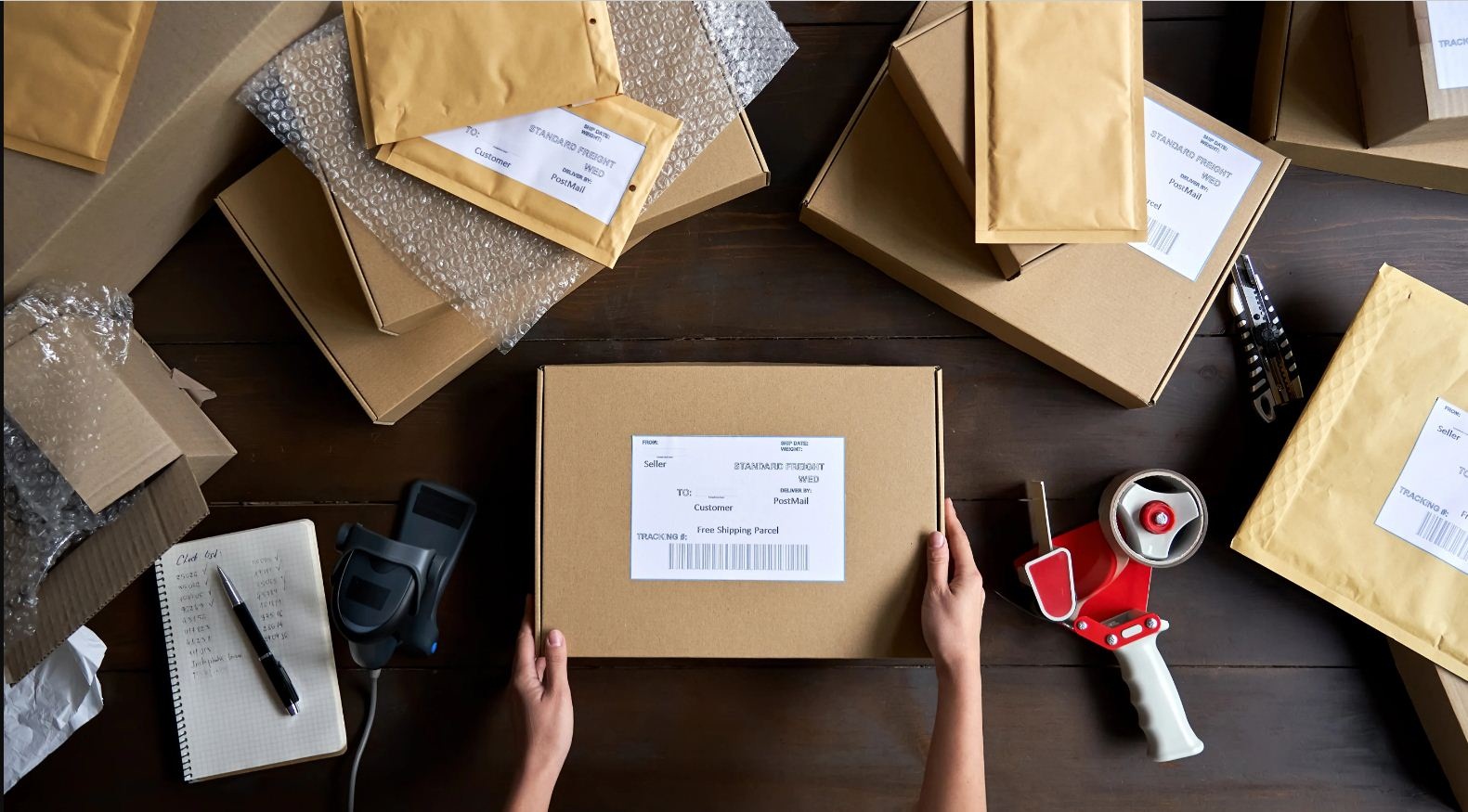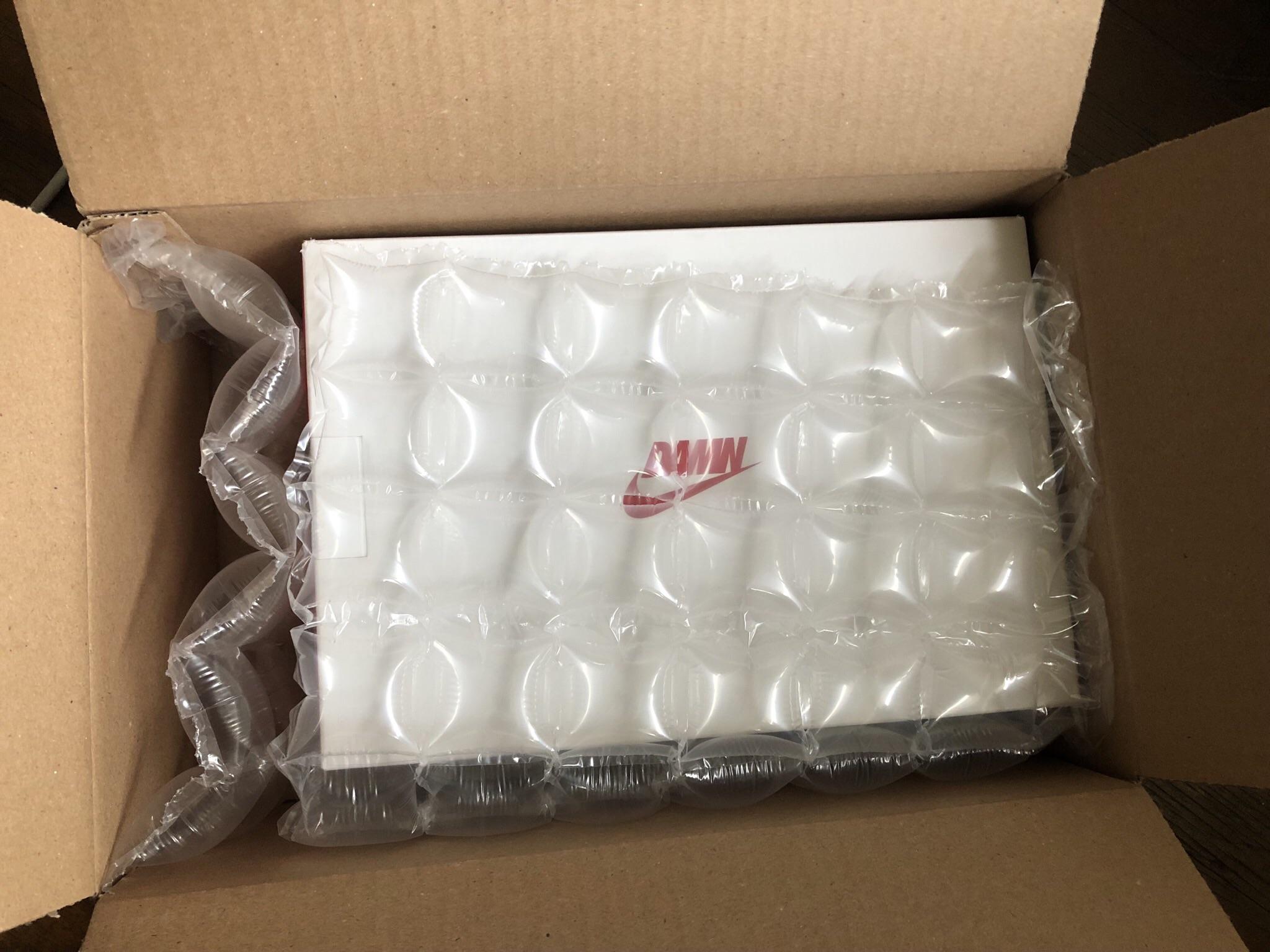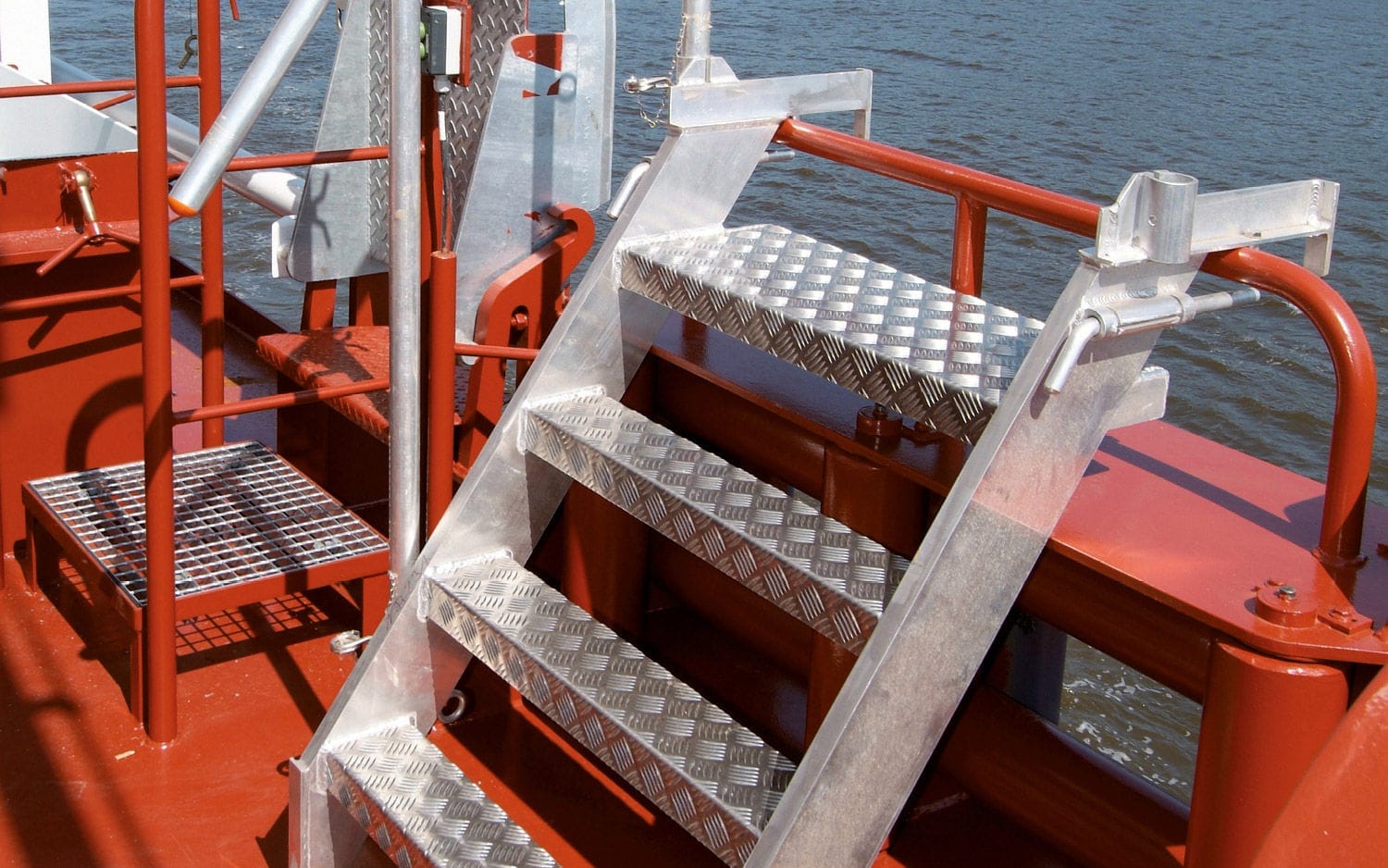

Articles
How To Store Shipping Supplies
Modified: January 22, 2024
Discover the best way to store shipping supplies in this comprehensive guide. From packing materials to organizing strategies, learn how to keep your articles safe and easily accessible.
(Many of the links in this article redirect to a specific reviewed product. Your purchase of these products through affiliate links helps to generate commission for Storables.com, at no extra cost. Learn more)
Introduction
When it comes to shipping products, having a well-organized and easily accessible space for storing your shipping supplies is essential. Whether you run an e-commerce business or regularly ship items for personal reasons, efficient storage of your shipping supplies can save you time, money, and frustration.
In this article, we will discuss various tips and strategies for storing your shipping supplies. From finding the right storage space to organizing and categorizing your materials, we will cover everything you need to know to keep your shipping supplies in order.
By implementing these storage techniques, you’ll be able to streamline your shipping process, minimize errors, and ensure that you always have the necessary supplies on hand when you need them. Now, let’s dive in and discover how to store your shipping supplies like a pro.
Key Takeaways:
- Efficient storage of shipping supplies is essential for saving time, money, and frustration. Find the right storage space, organize and categorize supplies, and maintain an inventory system to streamline your shipping process.
- Properly storing shipping supplies ensures easy access, minimizes errors, and contributes to overall business efficiency. Utilize designated workspaces, clear bins, and regular inventory audits to keep your shipping process running smoothly.
Read more: How To Store Shipping Boxes
Finding the Right Storage Space
Before you start organizing your shipping supplies, it’s important to find a suitable storage space that meets your needs. Here are a few factors to consider when finding the right storage space:
- Size: Assess the quantity and size of your shipping supplies to determine how much storage space you’ll require. If you only have a small number of items, a closet or corner of a room might suffice. However, if you have a larger inventory, consider renting a storage unit or allocating a dedicated area in your workspace.
- Accessibility: It’s crucial to have easy access to your shipping supplies. Consider the frequency of your shipments and how often you’ll need to retrieve materials. If you ship on a daily basis, having your supplies nearby and readily accessible will save you time and effort.
- Climatic conditions: Certain shipping supplies, such as adhesive tapes and labels, may be affected by extreme temperatures or high humidity. If you live in an area with extreme weather conditions, look for a storage space that provides climate control to protect your supplies from damage.
- Security: The security of your shipping supplies is paramount, especially if you store valuable or sensitive items. Consider opting for a storage space that offers proper security measures, such as surveillance cameras or a secure locking system, to safeguard your supplies.
Once you’ve considered these factors, you can decide on the most suitable storage space for your shipping supplies. Remember, the ideal storage space should be well-organized, easily accessible, and adequately protect your supplies from damage or theft.
Organizing and Categorizing Shipping Supplies
Once you have found the right storage space, the next step is to organize and categorize your shipping supplies. This will help you easily locate and retrieve items when you need them. Here are some tips to effectively organize and categorize your shipping supplies:
- Group similar items together: Start by grouping similar items together. For example, store all boxes in one area, packing materials like bubble wrap and packing peanuts in another, and shipping labels and tape in a separate section. This will make it easier to locate specific items when preparing shipments.
- Use labeled bins or containers: Invest in clear bins or containers and label them with the contents inside. This will help you clearly identify and locate specific shipping supplies without having to dig through piles of items. Consider using color-coded labels or tags for different categories to add an extra level of organization.
- Create a designated workspace: If you have the space, create a designated workspace for packing and preparing shipments. This can be a separate table or countertop where you can lay out your supplies and efficiently assemble packages. Having a designated workspace will streamline your shipping process and keep your supplies organized.
- Utilize shelving or storage units: To maximize space and keep your supplies within reach, consider using shelving or storage units. You can store boxes on shelves, pack materials in bins, and hang tape and labels on hooks or racks. Utilizing vertical storage will help you make the most of your storage space.
- Maintain a regular cleaning and organizing schedule: To prevent clutter and ensure your storage area remains organized, set aside time regularly to clean and reorganize your shipping supplies. This will help you stay on top of inventory and identify any items that need to be restocked.
By implementing these organizational strategies, you’ll create a streamlined and efficient system for storing your shipping supplies. You’ll be able to easily find and access the materials you need, saving you time and frustration during the shipping process.
Storing Shipping Boxes
Shipping boxes are an essential part of the shipping process, and efficiently storing them can help save space and keep your supplies organized. Here are some tips for storing shipping boxes:
- Break down the boxes: Before storing your shipping boxes, break them down and flatten them. This will help you save space and make it easier to stack and store the boxes. Remove any tape or labels from the boxes before folding them.
- Sort boxes by size: Group your boxes by size to easily locate the size you need when packing items. You can stack the different sizes together, with the larger boxes at the bottom and the smaller ones on top.
- Use dividers or shelves: If you have a large quantity of boxes, consider using dividers or shelves to separate and organize them. This will prevent the boxes from toppling over and keep them neatly arranged.
- Label the boxes: To quickly identify the contents or size of a box, consider labeling them. You can use adhesive labels or markers to write essential information on the outside of the box. This will save you time when searching for a specific box during the packing process.
- Keep a stock of different box sizes: It’s a good practice to keep a stock of various box sizes to cater to different shipping needs. By having a range of sizes on hand, you’ll be prepared to pack a variety of items without the need for multiple shipments.
Remember to keep the area where you store your boxes clean and free from moisture to prevent any damage to the boxes. Regularly check the condition of the boxes to ensure they are in good shape and replace any damaged ones. By properly storing and organizing your shipping boxes, you’ll have a constant supply of boxes readily available for your shipping needs.
Storing Packing Materials
Packing materials such as bubble wrap, packing peanuts, and other cushioning materials play a crucial role in protecting your items during shipping. Here are some tips for storing packing materials:
- Use clear bins or containers: Invest in clear bins or containers to store your packing materials. This will allow you to easily see the contents and determine when it’s time to restock. Opt for containers with lids to keep the packing materials clean and protected from dust or moisture.
- Organize by type: Separate and organize your packing materials by type. For example, keep bubble wrap in one container, packing peanuts in another, and any other cushioning materials in separate containers. This will help you quickly locate the specific material you need when packing items.
- Keep different sizes on hand: It’s important to have a variety of packing material sizes available. Different items may require different amounts or sizes of cushioning material. By having a range of options, you can ensure that you have the appropriate packing materials for each shipment.
- Consider reusable packing materials: If you want to minimize waste and save money in the long run, consider using reusable packing materials such as bubble mailers or padded envelopes. These materials can be used multiple times before needing to be replaced, reducing the need for constant restocking.
- Label the bins: To easily locate the specific packing material you need, label the bins or containers. Use clear and visible labels to identify the contents of each container. This will save you time and hassle when packing items and ensure that you grab the correct material every time.
Remember to regularly check your stock of packing materials and restock as needed. It’s better to have a surplus of packing materials than to run out during a busy shipping period. By properly organizing and storing your packing materials, you’ll be well-prepared to protect your items and ensure they arrive safely at their destination.
Store shipping supplies in a designated area to keep them organized and easily accessible. Use shelves or bins to separate different items such as boxes, tape, and packing materials. Keep the area clean and free from moisture to prevent damage to the supplies.
Read more: How To Ship A Kegerator
Storing Shipping Labels and Tape
Shipping labels and tape are essential tools for properly sealing and addressing your packages. Here are some tips for storing shipping labels and tape:
- Keep them together: Designate a specific area or container to keep your shipping labels and tape together. This will help you easily locate and access them when needed.
- Protect from damage: To prevent your shipping labels and tape from getting damaged or dirty, consider storing them in a plastic sleeve or sealable bag. This will ensure they stay clean, organized, and ready to use.
- Use a dispenser: Invest in a tape dispenser to keep your tape neatly rolled and easily accessible. A dispenser will also help you cut the tape cleanly, making the packing process smoother and more efficient.
- Label the tape: If you have different types of tape, such as clear tape, reinforced tape, or colored tape, label each roll for easy identification. This way, you can quickly grab the right tape for each packaging need.
- Store in a dry area: Moisture can affect the adhesive properties of tape, so it’s important to store your shipping labels and tape in a dry area. Avoid locations where the tape may be exposed to humidity or extreme temperatures.
By properly storing your shipping labels and tape, you’ll ensure that they remain in good condition and ready for use when packing your shipments. This will save you time and frustration during the packaging process, allowing you to seal your packages efficiently and securely.
Storing Fragile or Specialized Shipping Supplies
When it comes to fragile or specialized shipping supplies, proper storage is crucial to ensure their integrity and effectiveness. Here are some tips for storing fragile or specialized shipping supplies:
- Keep them separate: Store fragile or specialized shipping supplies separately from other materials to reduce the risk of damage. This can include items such as bubble wrap, foam inserts, or delicate packing materials.
- Use protective containers: Invest in protective containers or cases specifically designed to store fragile items. These containers provide an extra layer of protection while keeping your supplies organized and easily accessible.
- Label and handle with care: Clearly label containers containing fragile items and handle them accordingly. This will remind you and others to take extra caution when handling these supplies to minimize the risk of damage.
- Consider temperature and humidity: Some specialized shipping supplies, such as temperature-sensitive materials or adhesives, may require specific storage conditions. Ensure that these supplies are kept in a suitable environment to maintain their effectiveness.
- Regularly inspect and replace: Inspect your fragile or specialized shipping supplies regularly to check for any signs of damage or wear. If any supplies are damaged or no longer effective, replace them promptly to ensure the safety of your shipments.
By storing fragile or specialized shipping supplies separately and following these tips, you’ll minimize the risk of damage and ensure that your materials are ready to use when packing delicate or sensitive items.
Maintaining an Inventory System
Keeping track of your shipping supplies is essential for efficient operations and preventing stockouts. Establishing and maintaining an inventory system will help you stay organized and ensure that you have an adequate supply of materials at all times. Here are some tips for maintaining an inventory system:
- Track incoming and outgoing supplies: Log the arrival of new shipments and record the quantities received. Similarly, track the usage of supplies as they are used for packaging and shipping. This will provide you with an accurate picture of your inventory levels.
- Utilize technology: Consider using inventory management software or apps to streamline the tracking process. This technology can help automate inventory updates, generate reports, and set up alerts for low stock levels.
- Implement a barcode system: Use barcode labels on your shipping supplies to easily scan and update inventory levels. This will save time and minimize errors when tracking and counting your supplies.
- Conduct regular audits: Perform regular audits of your inventory to ensure accuracy and identify any discrepancies. This can involve physically counting your supplies and cross-checking them with your records.
- Set par levels: Determine the minimum quantity of each supply that should be on hand at all times. This will help you reorder materials before running out, preventing disruptions in your shipping process.
By maintaining an inventory system, you’ll have better control over your shipping supplies, reduce the likelihood of running out of essential materials, and save time by avoiding unnecessary searches or expedited orders. Regularly review your inventory reports and adjust your ordering quantities based on demand patterns to ensure an optimal supply level.
Conclusion
Properly storing your shipping supplies is crucial for maintaining an organized and efficient shipping process. By following the tips and strategies outlined in this article, you can create a well-organized storage system that allows you to easily locate and access your materials when needed. Here’s a recap of the key points:
– Finding the right storage space: Consider factors such as size, accessibility, climatic conditions, and security when choosing a storage space for your shipping supplies.
– Organizing and categorizing shipping supplies: Group similar items together, use labeled bins or containers, create a designated workspace, utilize shelving or storage units, and maintain a regular cleaning and organizing schedule.
– Storing shipping boxes: Break down boxes, sort boxes by size, use dividers or shelves, label the boxes, and keep a stock of different box sizes.
– Storing packing materials: Use clear bins or containers, organize by type, keep different sizes on hand, consider reusable packing materials, and label the bins.
– Storing shipping labels and tape: Keep them together, protect them from damage, use a dispenser, label the tape, and store them in a dry area.
– Storing fragile or specialized shipping supplies: Keep them separate, use protective containers, label and handle with care, consider temperature and humidity, and regularly inspect and replace.
– Maintaining an inventory system: Track incoming and outgoing supplies, utilize technology, implement a barcode system, conduct regular audits, and set par levels.
By implementing these storage techniques and maintaining an inventory system, you can streamline your shipping process, minimize errors, and ensure that you always have the necessary supplies on hand. This will not only save you time and frustration but also contribute to your overall business efficiency and customer satisfaction.
So, invest the time and effort to organize and store your shipping supplies effectively. Your future self will thank you when every item is easily accessible, and your shipments go smoothly.
Frequently Asked Questions about How To Store Shipping Supplies
Was this page helpful?
At Storables.com, we guarantee accurate and reliable information. Our content, validated by Expert Board Contributors, is crafted following stringent Editorial Policies. We're committed to providing you with well-researched, expert-backed insights for all your informational needs.















0 thoughts on “How To Store Shipping Supplies”